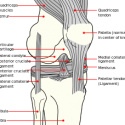 MedicalResearch.com Interview with:
Marya Viorst Gwadz, Ph.D
MedicalResearch.com Interview with:
Marya Viorst Gwadz, Ph.D
Senior Research Scientist Director,
Transdisciplinary Methods Core
Center for Drug Use and HIV Research (CDUHR)
New York University College of Nursing
New York, NY 10010
Medical Research: What is the background for this study?
Dr. Gwadz: HIV is a major success story in that the tolerability, convenience, and efficacy of antiretroviral medications have improved dramatically over the last decade. A number of years ago in the course of another research study with vulnerable individuals infected with HIV in New York City, and we noticed that a substantial proportion of study participants were medically eligible for HIV medications, and had access to medications, but had declined or stopped taking them. We then turned our attention to understanding why this is the case, that is, to identify the individual, social, and structural barriers that persons living with HIV/AIDS (PLHA) experience to antiretroviral therapy. We focused in particular on African American/Black and Latino/Hispanic PLHA, because the overall emphasis of our research group at the NYU College of Nursing is the development and evaluation of culturally targeted intervention approaches to address health disparities. Around 2011, studies of the “HIV cascade of care” began to emerge, which highlighted the problem of poor engagement in HIV care and antiretroviral therapy nationally. The ultimate goal of HIV treatment is viral suppression, but at present, the Centers for Disease Control and Prevention (CDC) estimates that we have achieved that goal with only 30% of PLHA.
Medical Research: What kind of intervention approach that emerged from these background findings?
Dr. Gwadz: We found that barriers to HIV medication are complex and multi-faceted for PLHA from African American/Black and Latino/Hispanic backgrounds. In particular, PLHA experience serious emotional barriers to the uptake of HIV medications, such as fear of side effects, stigma, and disclosure of
HIV status. Further, high rates of substance use and mental health distress, and barriers to accessing services for these concerns, impede medication uptake. Moreover, PLHA who are wary of HIV medication tend to avoid HIV primary care, often because they do not want to feel pressured to take medications, or explain to their providers why they are not taking them. So poor engagement in HIV care, which is very common among PLHA, and low uptake of HIV medication are actually related problems.
With funding from the National Institute of Mental Health (grant #R34MH093352), and in collaboration with Mount Sinai Beth Israel and Mount Sinai St. Luke’s-Roosevelt Hospital Center, we developed a multi-component culturally targeted intervention grounded in the Motivational Interviewing approach that included three individual sessions, 12-24 weeks of patient navigation (as needed), up to five support groups with other PLHA who had declined medication, which were co-led by a “successful” peer who was engaged in HIV care and were taking HIV medication with good adherence. One novel aspect of the intervention was its focus on emotional barriers to HIV medication, and the program’s “no pressure, no judgment” stance, congruent with the Motivational Interviewing approach, was key to engaging participants into the study to talk about these difficult issues.
(more…)
 MedicalResearch.com Interview with:
Hannah Arem, MHS, PhD
Division of Cancer Epidemiology and Genetics
National Cancer Institute, Bethesda, Maryland
Medical Research: What is the background for this study?
Dr. Arem: The 2008 Physical Activity Guidelines for Americans recommend a minimum of 150 minutes of moderate-intensity or 75 minutes of vigorous-intensity activity per week for “substantial” health benefit, and suggest “additional” benefit with more than double the exercise minimum. However, the guidelines note that there is a lack of evidence for an upper limit of health benefit. We set out to define the dose-response relationship between leisure-time physical activity and mortality and to determine the upper limit of benefit associated with higher levels of aerobic exercise.
Medical Research: What are the main findings?
Dr. Arem: We found that study participants who met the recommended minimum level of leisure-time physical activity derived most of the mortality benefit, with a 31% lower risk of death compared to inactive individuals. Study participants who engaged in three to five times the recommended minimum level of leisure-time physical activity had a marginally increased mortality benefit, with a 39% lower risk of death compared to inactive individuals. Three to five times the recommended minimum is equivalent to a weekly minimum of walking 7 hours or running 2 hours 15 minutes.
(more…)
MedicalResearch.com Interview with:
Hannah Arem, MHS, PhD
Division of Cancer Epidemiology and Genetics
National Cancer Institute, Bethesda, Maryland
Medical Research: What is the background for this study?
Dr. Arem: The 2008 Physical Activity Guidelines for Americans recommend a minimum of 150 minutes of moderate-intensity or 75 minutes of vigorous-intensity activity per week for “substantial” health benefit, and suggest “additional” benefit with more than double the exercise minimum. However, the guidelines note that there is a lack of evidence for an upper limit of health benefit. We set out to define the dose-response relationship between leisure-time physical activity and mortality and to determine the upper limit of benefit associated with higher levels of aerobic exercise.
Medical Research: What are the main findings?
Dr. Arem: We found that study participants who met the recommended minimum level of leisure-time physical activity derived most of the mortality benefit, with a 31% lower risk of death compared to inactive individuals. Study participants who engaged in three to five times the recommended minimum level of leisure-time physical activity had a marginally increased mortality benefit, with a 39% lower risk of death compared to inactive individuals. Three to five times the recommended minimum is equivalent to a weekly minimum of walking 7 hours or running 2 hours 15 minutes.
(more…)






















